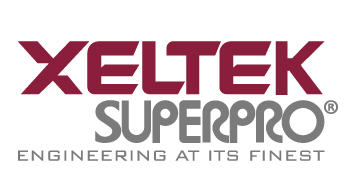Return & Repair Management Software | Must-Have Features
Manufacturers and distributors, especially of high-value products, now operate in a world where after-sales experience is not optional margin erosion — it is a controllable lever of retention, reputation, and repeat revenue. The quality of a brand's repair and returns process, and the baseline features of its Return Management Software increasingly determines whether a dissatisfied user becomes a churn risk or a long-term loyalist.
Yet most organizations still manage multi-stage repair cycles using inboxes, spreadsheets, and human heroics. That model may function in low volume, but it does not scale without cost. As expectations rise and product portfolios grow more complex, returns and repair orchestration has become a discipline of its own — no longer a peripheral task inside customer support.
For this reason, modern solutions in this category must satisfy a new set of requirements. The following capabilities are now baseline for any system intended to run repair and returns operations at scale.
1) Status-Triggered, Inter-Department Orchestration
Repair cases travel through multiple business functions — Customer Care, Receiving, Returns, Repair Teams, QA, Accounting, Shipping. Every handoff is a risk point. A modern system must convert status transitions into deterministic, routed actions: notifying the appropriate department instantly, without someone having to "remember to forward."
Automated orchestration removes two persistent costs in operations: waiting, and wondering.
2) Dual Initiation: Self-Serve and Assisted Creation
Sophisticated programs must support two initiation paths:
- Customer-initiated requests for standard, self-serve workflows
- Agent-initiated requests for escalations, VIP handling, and proactive retention
The ability for support personnel to set up a case on behalf of the customer is not simply convenience — it is a service signal. It conveys ownership, diminishes friction, and prevents avoidable churn during moments of dissatisfaction.
3) Controlled Denial with Structured Revision — Without Restart
Incomplete RMA-request submissions are inevitable. A system that forces a rejection and a fresh re-entry penalizes both customer patience and support efficiency. Robust tooling must allow reviewers to temporarily deny, request missing documentation (invoice, serial, photos, proof of purchase), and allow customers to revise and resubmit the same case.
Efficiency in this stage directly reduces abandonment rate and rework.
4) Multi-Item Claims and Bulk Intake for B2B Scale
In B2B manufacturing, returns are rarely singular. Solutions must support multi-line claims and high-volume ingestion — including bulk upload (via .CSV files) of returned items for events such as product recalls, distributor consolidation returns, channel sweepbacks, end-of-life pullbacks, and aging-inventory refurbishments.
High-value channels measure responsiveness at volume, not item-by-item. Systems that cannot absorb batch events will transfer the cost to people.
5) Case-Level Named Ownership and Direct Reply Routing
Customers escalate when they feel anonymized. Assigning a specific representative to a case — and routing reply-emails back to that owner — is not cosmetic. It creates accountability, shortens response cycles, and increases perceived competence. Generic mailbox routing, in contrast, drives duplication, delay, and distrust. This feature is a must for a Repair Management Software to be trully effective beyond transactional use because the repair process often requires multiple touchpoints. A dedicated point of contact ensures continuity and builds rapport throughout the repair journey.
6) Lightweight Deployment and Evolution — Not an ERP-Class Project
ERPs and MRPs have a too broad-scope and slow time-to-value. Repair and returns orchestration should not require multi-quarter deployments, consultant-led configuration, or extensive classroom training. Robust systems in this domain must be:
- Fast to implement
- Simple to operate across non-technical roles
- Adaptable without code or vendor intervention
The operational environment shifts; the system must evolve with it, without cost and inertia attached to every adjustment.
Organizations evaluating a Return and/or Repair Management Software should benchmark prospective solutions against the six characteristics above. The difference between a transactional returns tool and a true repair-cycle orchestration platform is not aesthetic — it expresses itself in faster turnaround time and better overall customer support.
Any platform under consideration should demonstrate, not claim, that it can execute the capabilities described — against your real workflow, with your real stakeholders, under real-world painpoint use cases.
All of the above capabilities are built-in into RMAPORTAL. Contact us today!












